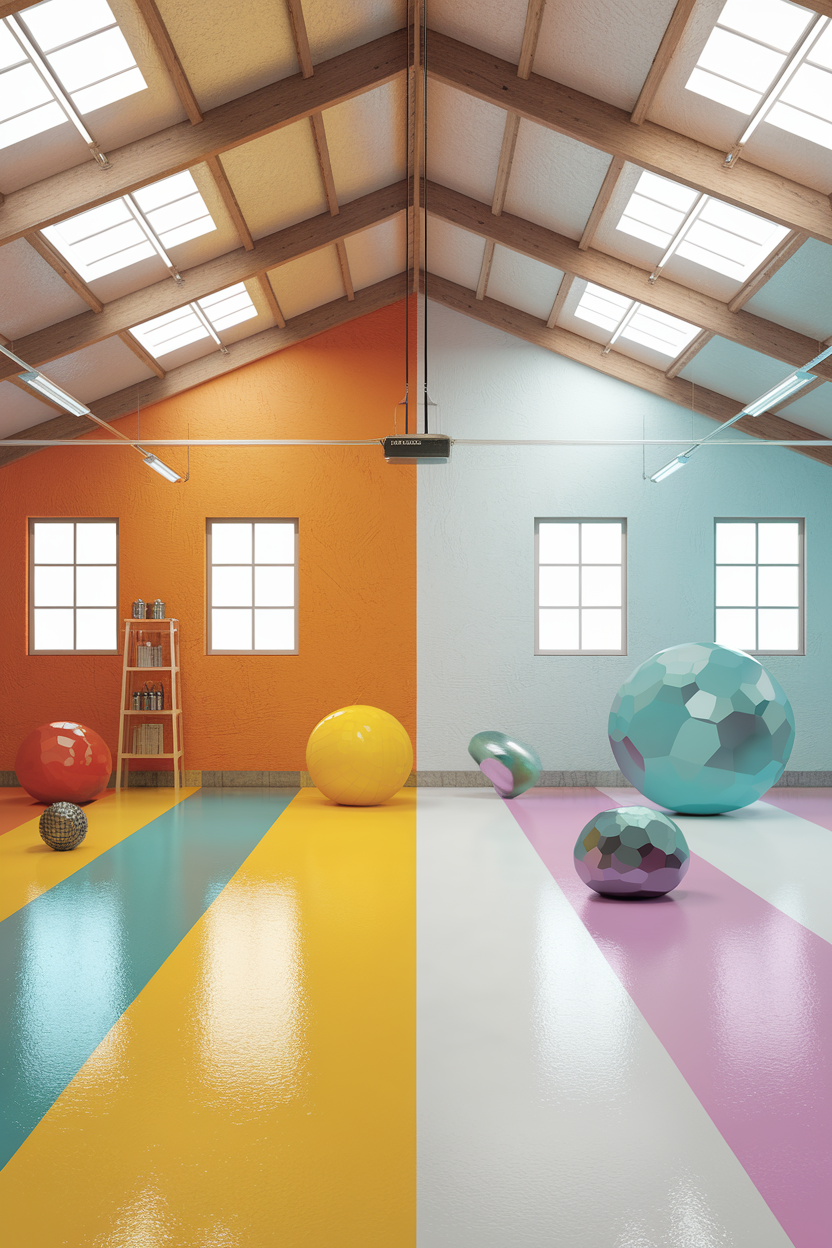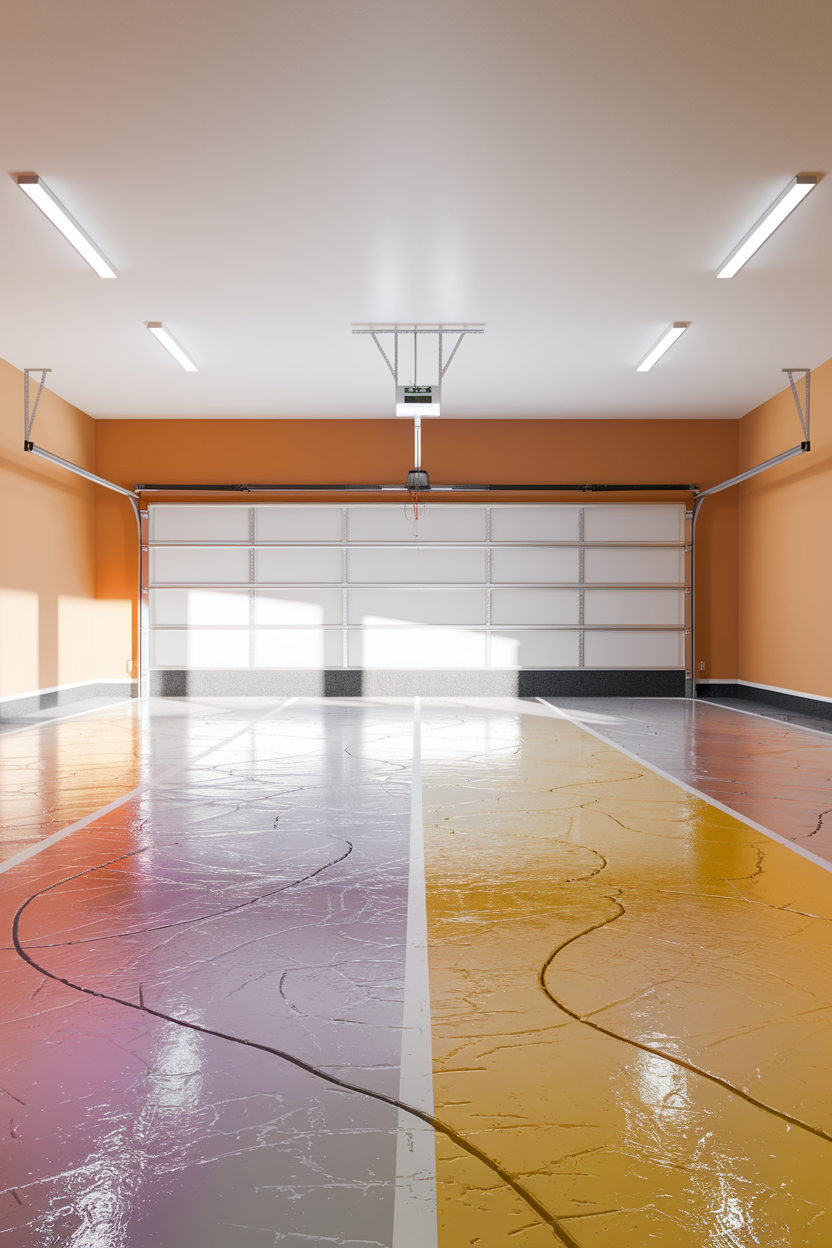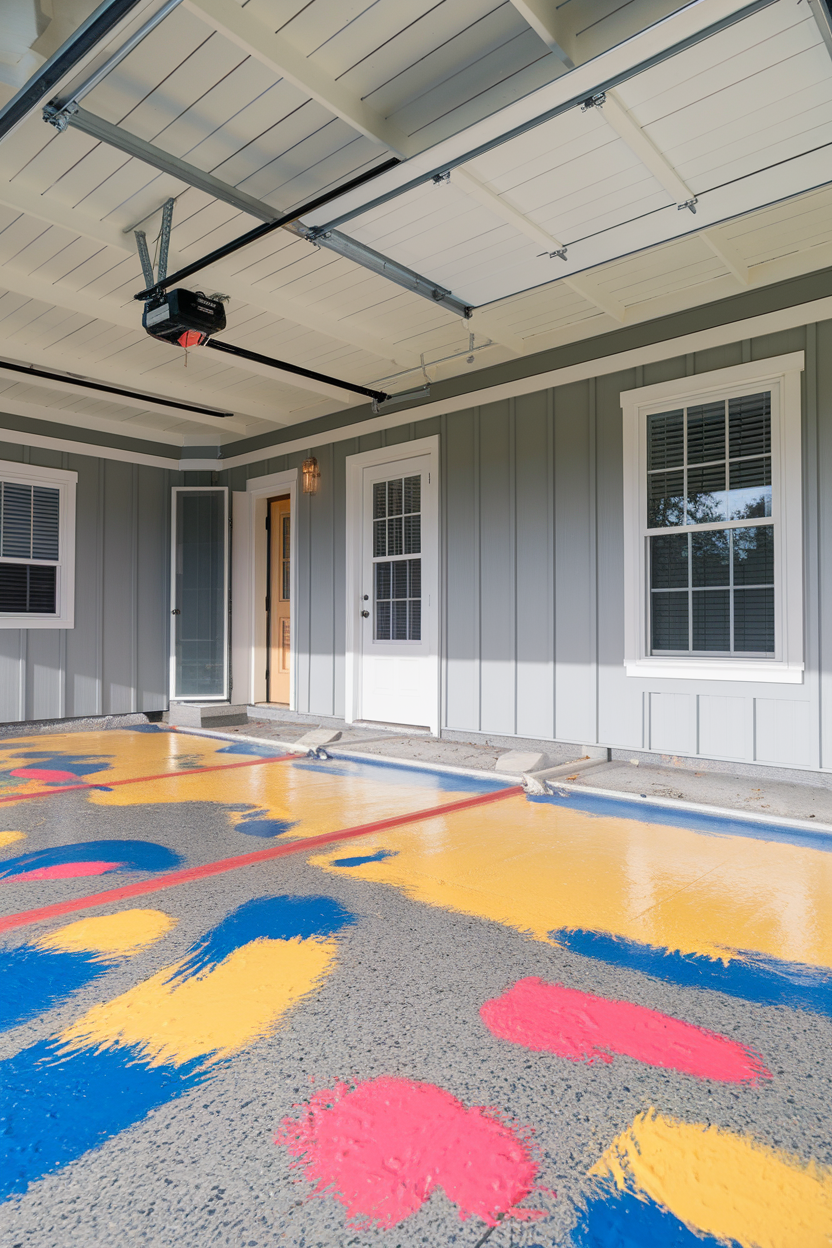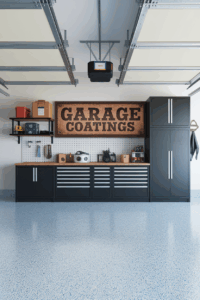Epoxy vs. Paint: Which Is the Right Choice for Your Garage Floor?

You want a better garage floor, but the choices can feel overwhelming. Should you go with a tough, long-lasting epoxy coating or a simple, affordable coat of paint? This is the main question every homeowner faces when looking to improve their garage.
The truth is, each option has its pros and cons. Epoxy offers amazing durability and protection, but it requires careful preparation and a higher upfront cost. If you don’t do it right, you could end up with a peeling, bubbling mess.
Paint, on the other hand, is much cheaper and easier to apply. However, it just doesn’t have the strength of epoxy and will likely need to be redone every few years, especially in a busy garage.
Ultimately, the best choice depends on your budget, how much prep work you’re willing to do, and what you want for your space long-term. We’ll break down every factor to help you make the right call for your garage.
Whether you choose the premium protection of epoxy or the budget-friendly refresh of paint, one thing is certain: preparing the floor is the most critical step. A clean, properly prepared surface is the foundation for a finish that lasts.
What Exactly Is an Epoxy Floor Coating?

An epoxy floor coating is more than just paint; it’s a high-performance resin system. True epoxy has two parts—a resin and a hardener—that you mix together right before you apply it. This chemical reaction creates a thick, hard, and incredibly durable surface.
This hardened shell provides excellent protection against the toughest garage challenges. It resists chemicals, oil, gasoline, and other fluids that would stain or damage bare concrete or paint. Once cured, epoxy creates a seamless, non-porous surface.
For the best results, you should apply epoxy to clean, porous concrete or cement garage floors. It is not made for surfaces like asphalt, brick, or stone. The key to success is creating a strong bond with the concrete slab.
Professionals agree that when applied correctly, epoxy is one of the best ways to protect your garage floor. It protects the concrete from stains, spills, and moisture trying to come up from the ground. When you follow the rules, epoxy stays put and does its job.
One of our most popular articles, “I’ll never epoxy my garage floor (here’s what I’ll do instead),” explores other options, but for pure durability, epoxy is a top choice.
And What About Garage Floor Paint?

Garage floor paint is a simpler, more traditional coating. These are usually one-part products, either latex or oil-based. Some are boosted with a small amount of epoxy resin and are often sold as “1-part epoxy paint.” This is not the same as a true two-part epoxy system.
The biggest benefit of paint is its lower cost and how easy it is to apply. It’s much more forgiving than true epoxy. While paint might stick to a surface that isn’t perfectly prepared, its life will be much shorter.
Paint made for concrete is a clear improvement over a bare floor. It will resist some stains and wear better than an unprotected surface. However, harsh chemicals and heavy cleaning can wear it away over time.
Even with great preparation, paint is a temporary fix. You can expect it to start peeling or chipping within three to five years. This means you’ll need to scrape, sand, and repaint to keep your floor looking fresh.
Durability Showdown: Which Coating Truly Lasts?

When it comes to durability, there is no contest. True epoxy is much tougher than any paint. When you correctly apply an epoxy system, it forms a hard, thick shell that is highly resistant to impacts, chemicals, and wear from tires and tools.
Paint, by contrast, will begin to fail in just three to five years. This lifespan is shortened by heavy traffic, extreme temperatures, and contact with abrasives like sand and road salt.
A well-maintained epoxy floor can last for a decade or more. Busy commercial garages might need a new clear topcoat after 10-20 years, but for most homeowners, a quality epoxy coating is a long-term investment.
Fixing damage also shows the difference. To fix chipped paint, you have to scrape off the loose flakes, sand the edges, wash the floor, and touch up the area with new paint. Because epoxy is so tough, chips are rare and usually mean there was a problem with the application, but the repair process is more complex.
The Critical First Step: Why Flawless Floor Prep Is Everything

Whether you choose the most expensive epoxy system or a simple can of paint, your project will fail without proper floor preparation. This is the single most important step for getting a finish that lasts. The coating is only as good as the surface it’s bonded to.
Epoxy is especially demanding; it will bubble or peel if the floor isn’t perfectly clean, porous, and dry. Paint is more forgiving, but any dirt or oil left on the floor will weaken its bond and lead to early peeling and chipping.
The preparation process can be broken down into three main phases. First, you must thoroughly clean and degrease the floor. Second, you need to repair any damage. Finally, you must profile the surface so the coating has something to grip.
Any step you take to prepare the floor for epoxy will also benefit paint. If you want results that last, spend most of your time and effort creating a perfect foundation.
For a complete guide to fixing your concrete before you coat it, see our article: Don’t Fix Your Garage Floor Until You Read This.
Prep Phase 1: How to Clean and Degrease for a Perfect Bond

The first active step in preparation is making the floor spotlessly clean. Start by using a shop vacuum to remove all loose dust and debris. I recommend using the blower function first to get dust out from corners and cracks, then sweeping and vacuuming again.
Next, use a pressure washer to thoroughly wash the entire surface. A powerful jet of water will not only remove grime but can also show you weak spots by chipping away old paint or bad concrete.
If your floor has any oil or grease stains, you must remove them completely, as they will stop any coating from bonding. Scrub the spots with a strong degreaser like Purple Power and a stiff brush, then rinse well with clean water.
Repeat the degreasing process as many times as you need to. You’ll know the oil is gone when water soaks into the spot evenly instead of beading up. This is a critical test to ensure a good bond.
Prep Phase 2: How to Repair Cracks, Pits, and Damage

Once the floor is clean, you can fix any problems in the concrete. You must repair cracks, spalling (flaking), and pitting before applying any coating. A smooth, solid surface is essential.
For cracks, use an angle grinder with a crack chaser wheel to open them up and create a “V” shape. This allows the repair material to get in deep and form a strong lock. Clean all the dust out of the crack.
For flaking and pitted areas, use an angle grinder with a diamond grinding wheel to remove all loose and crumbling concrete. Your goal is to get back to a solid, stable surface. Again, clean the repaired area thoroughly.
Fill the prepared cracks and patches with a high-quality concrete repair compound or an epoxy patch filler. Do not use regular concrete for patches. New concrete does not bond well to old, cured concrete and will eventually fail.
Make sure all patch and repair work is fully cured and completely dry before you move on to the next step. Our site has detailed guides for these tasks:
- How Do You Fix Garage Floor Cracks?
- How Do You Fix Garage Floor Spalling and Pitting?
- How Do You Fix Low Spots in Concrete?
Prep Phase 3: Why You Must Grind or Etch for Maximum Grip

The final preparation step is creating a surface profile. If your concrete is smooth, sealed, or has an old coating, the new epoxy or paint will have nothing to grab onto. You must rough up the surface to make it porous.
Grinding or etching the floor is essential for creating tiny peaks and valleys that the coating will grip. For large areas or thick existing coatings, renting a floor grinder with a diamond attachment is the best method.
For many DIYers, chemical etching is an easier option. You can use a concrete etcher product, which is often safer to handle than muriatic acid, to open up the pores of the concrete.
Follow the product’s directions carefully. Usually, you will brush the etcher onto the damp floor, let it fizz and work for a set time, and then rinse it away with water and a scrub brush. Let the floor dry completely for several days before applying any coating.
Which Floor Is Easier to Clean?

Once your new floor is installed, keeping it clean is simple—but epoxy has a clear advantage. Both paint and epoxy create a smoother surface than bare concrete, making them easy to sweep or clean with a shop vacuum.
For general spills and dirt, a wet mop with simple soap and water works perfectly fine on both painted and epoxied floors. The smooth surface prevents dirt from getting trapped in the pores of the concrete.
The main difference shows up when you need a deep clean. A properly installed epoxy floor hardens into a durable, plastic-like shell that is tough enough to handle a standard pressure washer without damage. This makes washing away heavy mud or grime incredibly easy.
Using a pressure washer on a painted floor is risky. The high-pressure water can easily get under the edge of a small chip or weak spot, lifting the paint and causing it to peel. With paint, you must always be gentler when you clean.
Cost Breakdown: Is Epoxy or Paint Cheaper in the Long Run?

When comparing costs, it’s easy to look at the price per gallon and say paint is the winner. However, to get a true picture, you must consider coverage rates, the number of coats needed, and long-term durability.
Floor paint typically covers 300 to 500 square feet per gallon. For a durable finish, you will likely need one coat of primer and two coats of paint. For a 312 sq ft garage, that’s 312 sq ft x 3 coats = 936 sq ft of total coverage needed, requiring 2-3 gallons of product.
True epoxy systems are often sold in kits measured for a 1- or 2-car garage. A quality epoxy may only cover 200-250 sq ft per gallon, but you usually only need one thick coat of epoxy plus a clear topcoat. The upfront material cost for epoxy is almost always higher.
However, the long-term cost flips the script. Since paint needs to be reapplied every 3-5 years, you will be repeating the cost of materials and labor (your time) multiple times. A single, quality epoxy application can last 10-20 years, making it the more cost-effective choice over the life of your garage.
VOCs and Fumes: How to Stay Safe During Application

When working with any chemical coating, it’s important to think about health and safety. Many paints and coatings release Volatile Organic Compounds (VOCs) as they are applied and cure. According to the EPA, VOCs are chemicals that can have negative health effects.
These chemicals, such as formaldehyde and benzene, can pollute the air and are toxic to both people and animals. To reduce your risk, the EPA recommends using low-VOC or zero-VOC products whenever possible.
Traditional solvent-based epoxy resins can also release strong, harmful fumes. Many modern water-based epoxies have much lower VOC content, but proper safety gear is still essential.
No matter which product you choose, always make sure your garage has maximum ventilation by opening doors and windows and using fans. Always wear the right personal protective equipment (PPE), including safety goggles, nitrile gloves, and a respirator rated for organic vapors.
What Tools Do You Need for the Job?

Having the correct tools will make your project go smoother and be more successful. For floor paint, the required equipment is simple. You’ll need a paint tray, an extension pole for your roller, a good quality roller frame, and roller covers designed for semi-smooth surfaces.
Applying a two-part epoxy requires a few more specialized tools. In addition to a high-quality roller and brush, you will need tools for mixing and managing the product’s pot life.
- A low-speed drill with a spiral mixing paddle
- Several graduated mixing buckets (never mix epoxy in the product can)
- A shed-resistant roller cover specifically for epoxy
- Spiked shoes that let you walk on the wet epoxy to fix issues
- A full set of personal protective equipment (respirator, gloves, goggles)
The key to a successful epoxy application is managing the “pot life.” This is the limited time you have to work from the moment you mix the two parts until the product starts to harden in the bucket. Only mix as much as you can apply within that time.
Finally, always check and follow the temperature and humidity requirements in the product’s instructions. Applying paint or epoxy outside of these ranges is a main cause of coating failure.









